Gallery of Finished Work
These are examples from my portfolio, showcasing a variety of media and techniques.
This painting was inspired by my garden when I lived in New Jersey. The flowers are Siberian irises, and the little critter is a hummingbird moth. Each afternoon the hummingbird moths would come to my garden to feed. I thought they were tiny hummingbirds at first. This is what is called mimicry in nature. They act very much like hummingbirds; it wasn’t until after careful inspection that I realized it was actually a moth. I used a wet-on-wet technique for the background and placed plastic wrap on top until dry. Once dry, I removed the plastic wrap, revealing the abstract background pattern. To preserve the white of the paper for the flowers and moth, I used masking fluid.
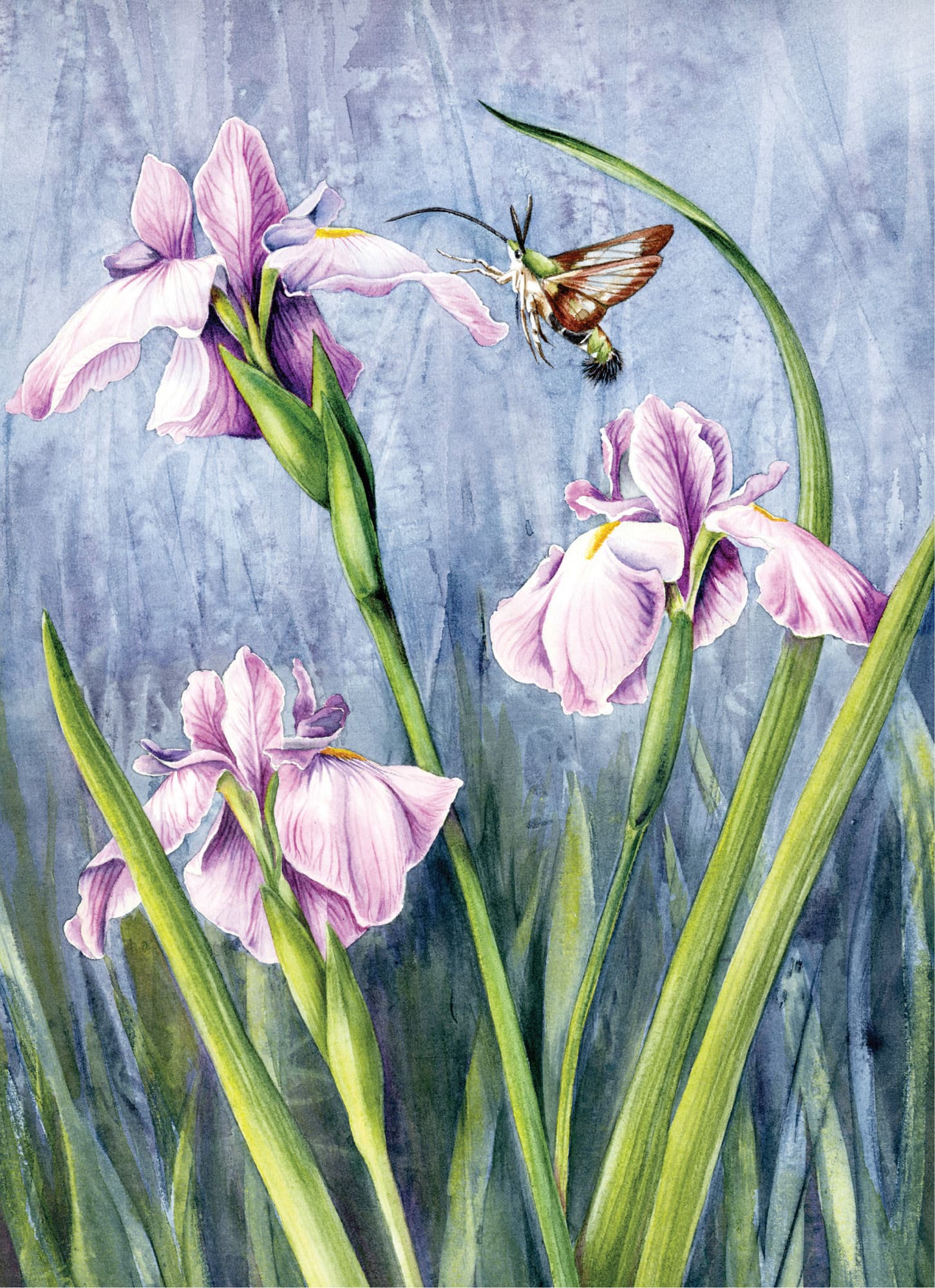
Hummer Time, 14" × 18," watercolor on Fabriano Artistico Soft Press 300-lb.
The first signs of spring can inspire! One of the first trees to bloom in the Northeast United States is the magnolia tree. This is an uncommon variety, with blooms that are deep, dark plum on the outside and pale pink on the inside. I painted the branch with hematite watercolor. The mourning cloak butterfly is one of the first butterflies to emerge in the spring, because it overwinters as an adult. I decided to put the two together to celebrate the first signs of spring.
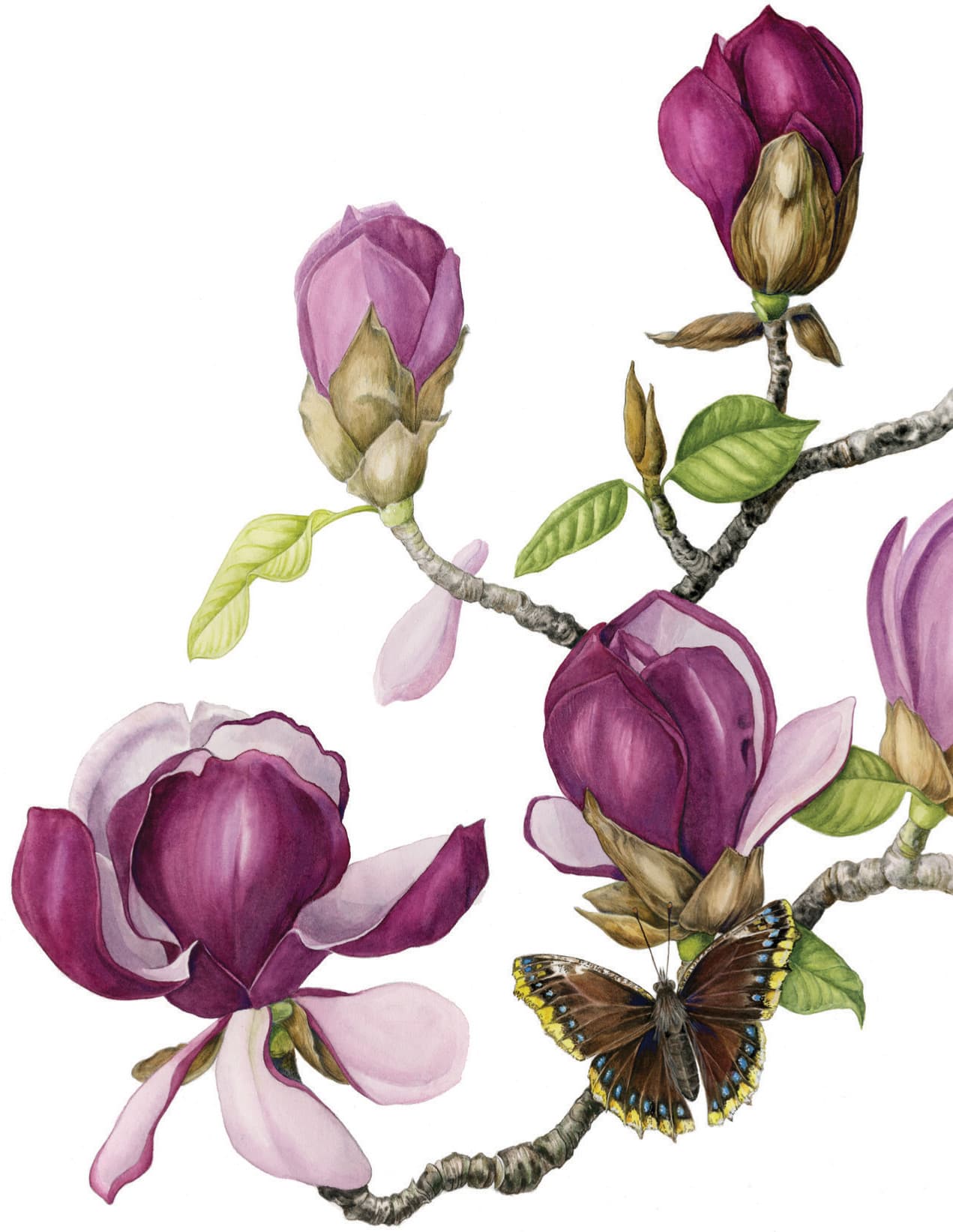
Harbingers of Spring, 14" × 18," watercolor on Fabriano Artistico Hot Press 300-lb.
I found this beautiful flower at my local garden center! It comes in pale pink, magenta, and white. I was thrilled with the discovery, as I was able to purchase it, bring it home, and draw it in my studio at varying stages: bud to emerging bloom to full flower.
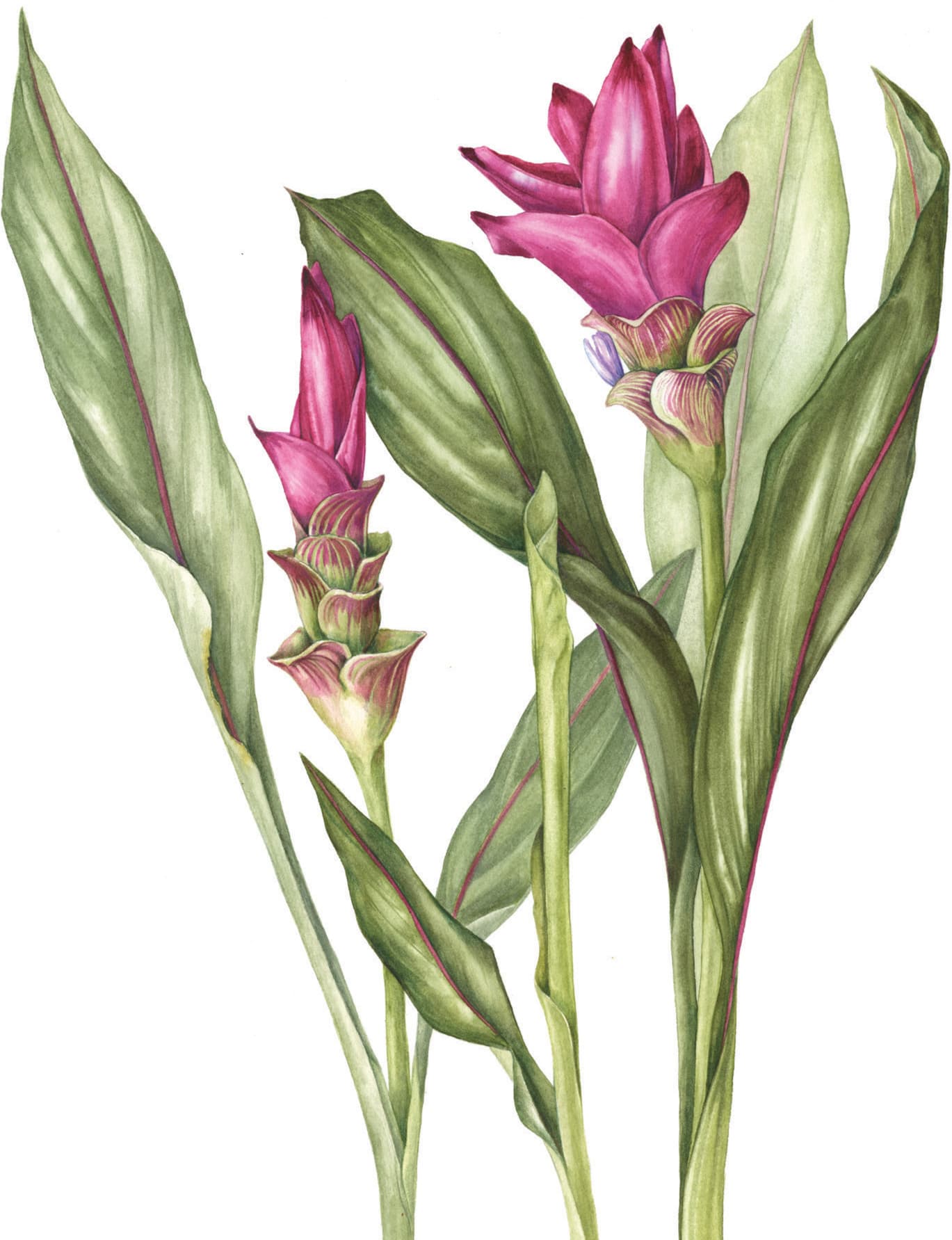
Siam Tulip in Magenta, 14" × 18," watercolor on Fabriano Artistico Hot Press 300-lb.
I visited a tropical garden in Costa Rica that specializes in attracting hummingbirds. The white-necked Jacobin is a medium-size “hummer.” This flower is a type of heliconia that is pollinated by hummingbirds. I created a tonal drawing in graphite first, and then applied gouache on top, starting with thin and transparent layers and gradually working my way to more opaque layers.
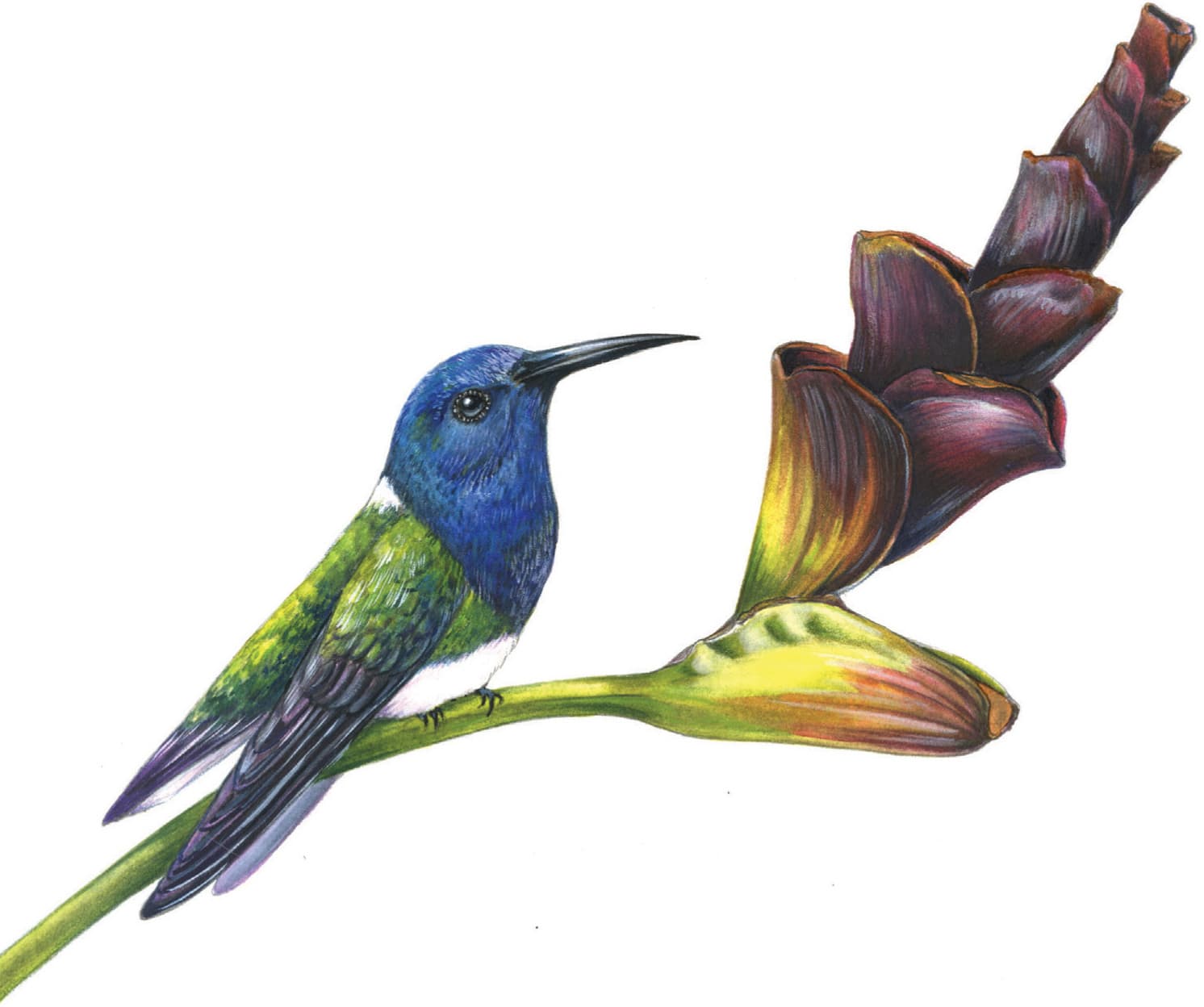
White-necked Jacobin, 14" × 10," graphite and gouache on Fabriano Artistico Hot Press 300-lb.
While visiting the Toucan Rescue Ranch, a rehabilitation center in Costa Rica, I created this preliminary colored pencil sketch of one of their owls in quarantine. After my trip, I used my sketches and photographs to create this compilation of the animals they care for. This colored pencil illustration was used in promotional t-shirts and other products to raise money for their foundation.
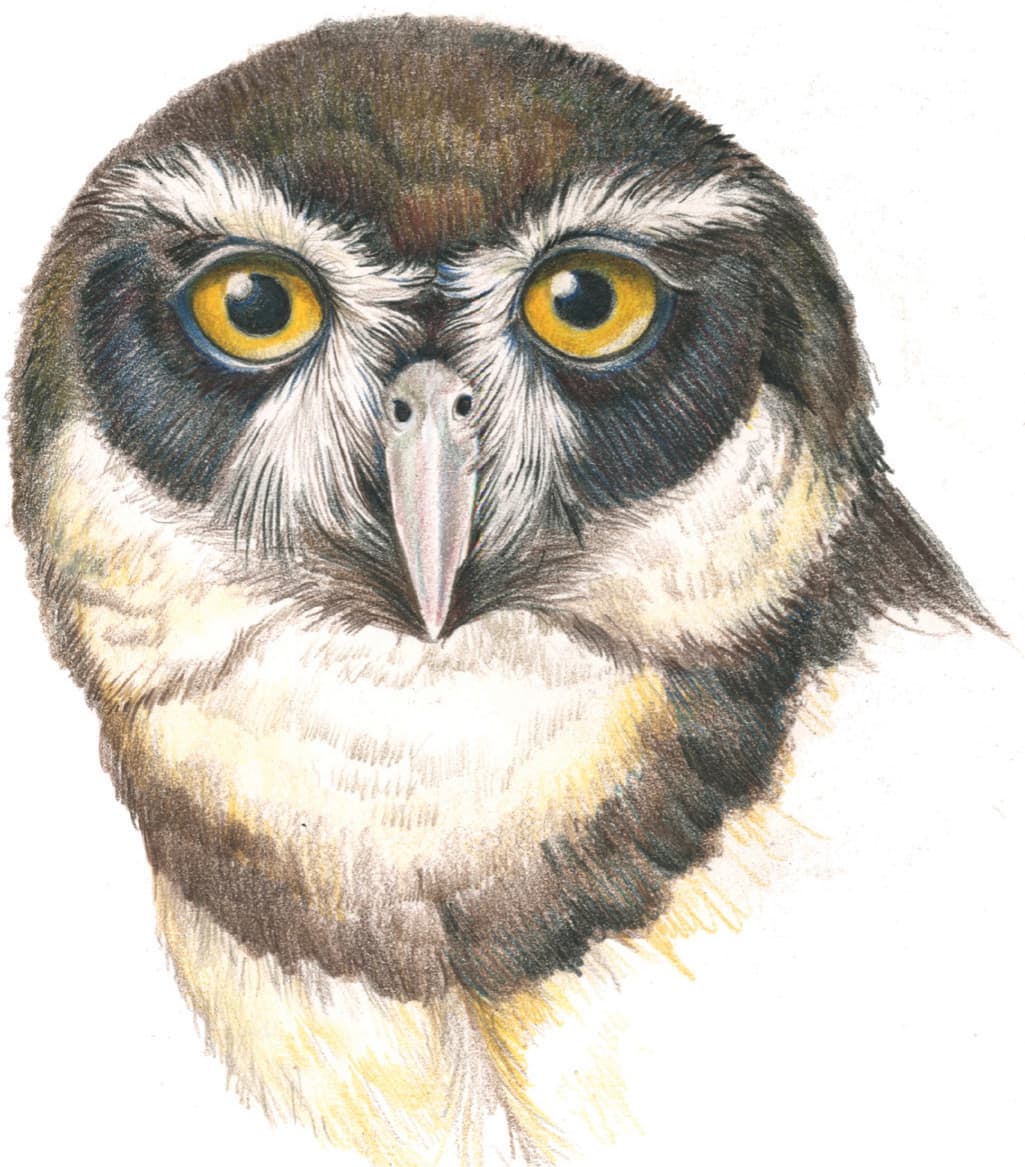
Spectacled owl sketch, 5" × 7," colored pencil on Strathmore drawing paper
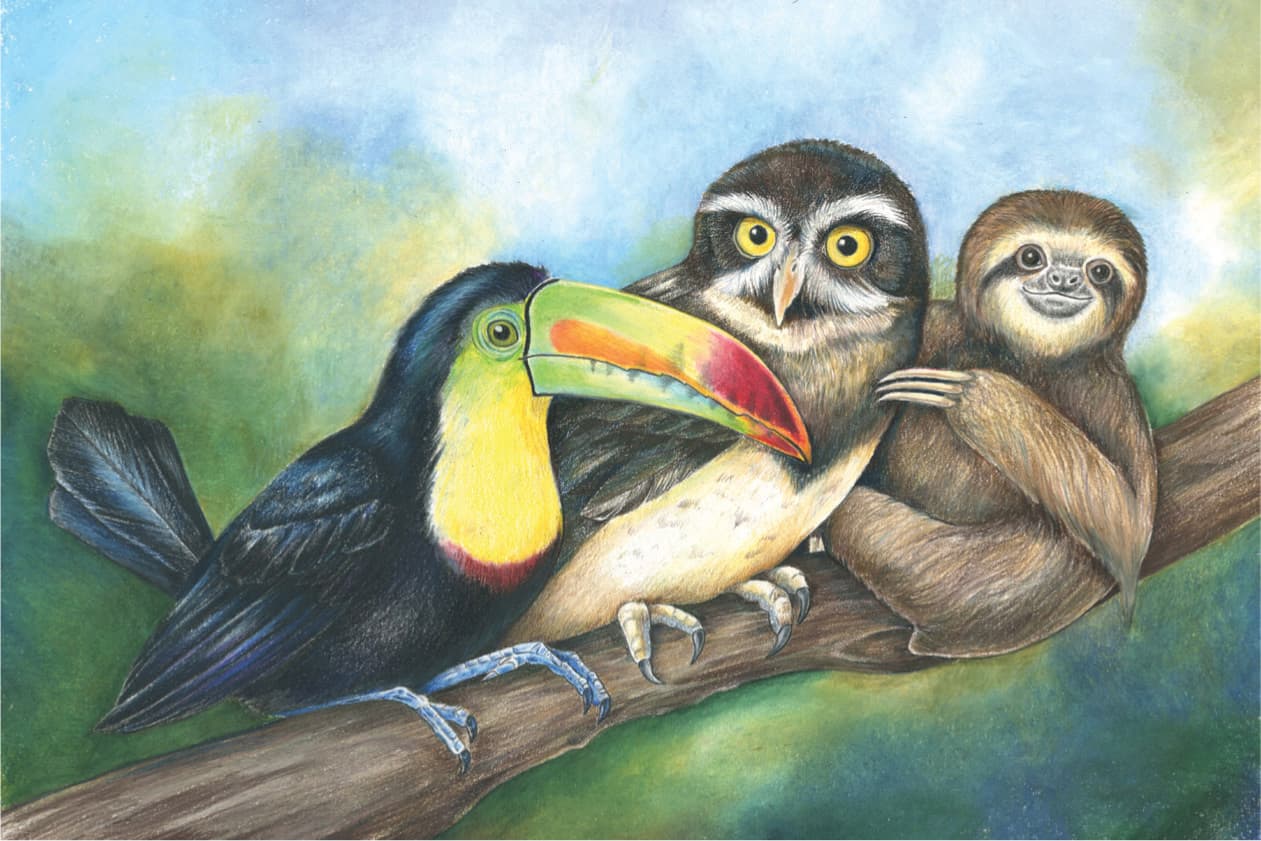
Toucan Rescue Ranch, 18” × 14," colored pencil on Stonehenge paper
Drawing and photographing hummingbirds is challenging. Capturing the wings in a still shot requires a very high shutter speed. Hummingbirds beat their wings at an average rate of 50 flaps a second. This painting was done from a photograph I took in Costa Rica at a hummingbird feeder. The bird repeatedly came to the feeder, left to rest on a perch, and come back to the feeder. I wanted to capture the wings open, so I waited by the feeder and used the “burst” feature on my camera. This allowed me to take several photographs in rapid succession, which gave me enough information to draw from. I replaced the ugly plastic feeder in my photo with a beautiful heliconia, which is one of the birds’ favorite nectar plants.
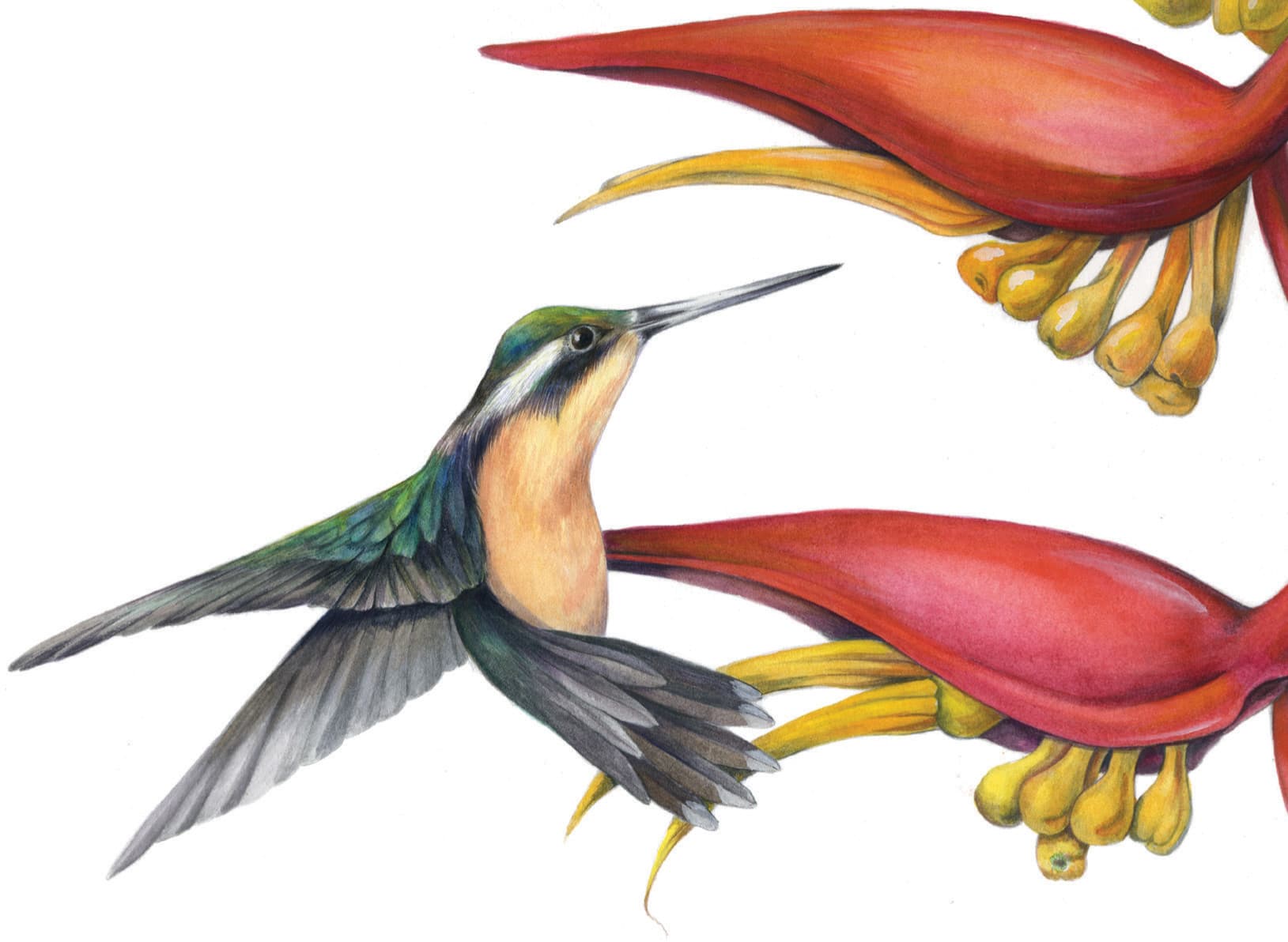
White-throated Mountain Gem, 10" × 8," graphite and gouache on Lana Aquarelle Hot Press 300-lb.
Orchids are everywhere in Florida! I tried growing them when I lived in New Jersey, and they always died. The climate I live in now allows me to buy the plants and put them outside when I am done drawing them. This type of orchid is an epiphyte. An epiphyte is a plant that grows upon another plant, mostly (but not always) on trees. It receives moisture and nutrients from the air, rain, and sometimes from debris accumulating around it. This type of orchid typically comes in a small pot filled with cork or coconut husks to anchor the plant from falling over and aerate the root system.
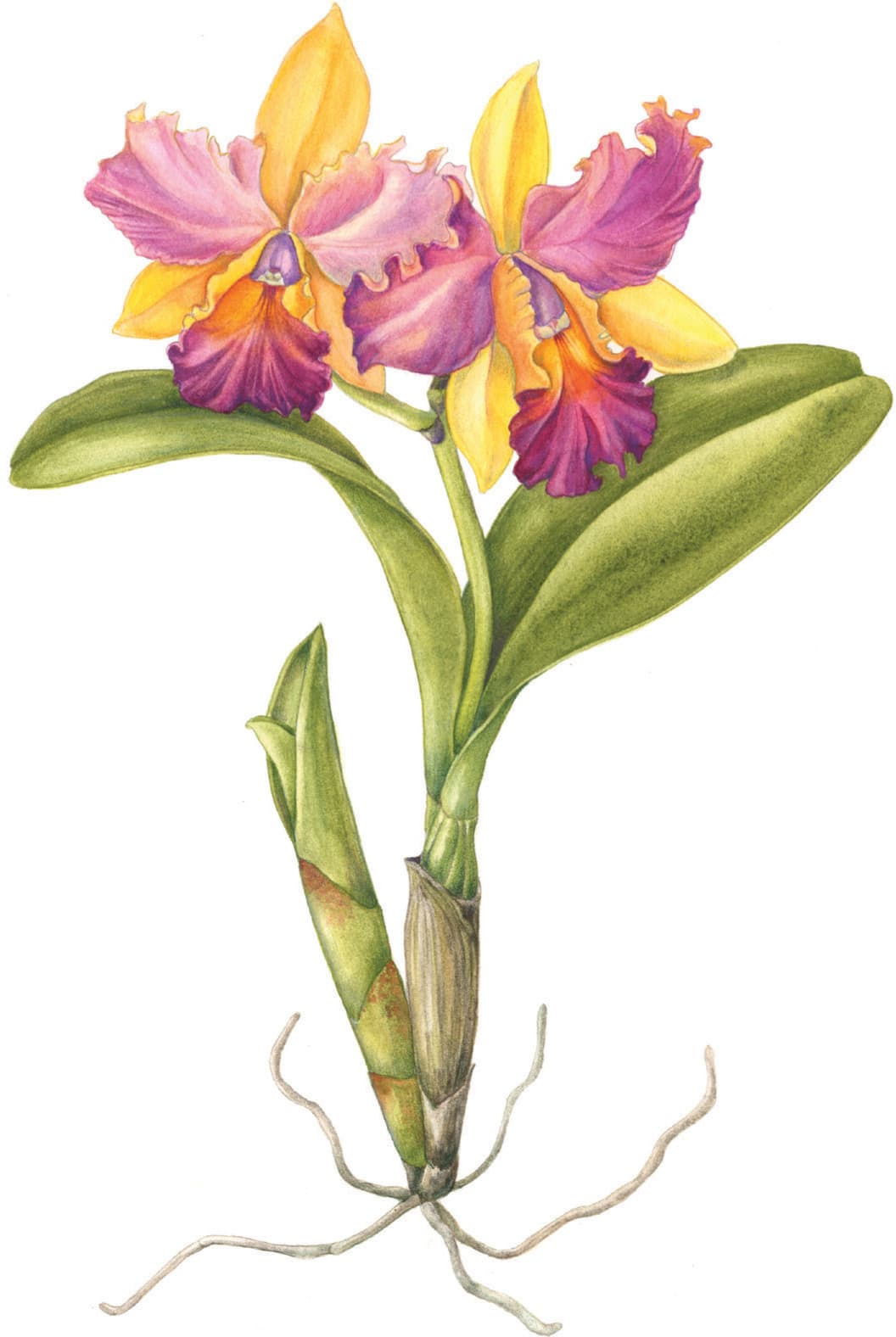
Sherbet Catelaya, 10" × 14," watercolor on Fabriano Artistico Hot Press 300-lb.
Most botanical and scientific illustrations are done in black and white, because color reproduction is more expensive. I illustrated this artichoke in pen and ink using a dip pen called a crow quill pen. The beauty of working with this type of pen is that you can create thick and thin lines by varying the pressure with your hand. It takes practice and cannot be reproduced with a marker or technical pen.

Artichoke, 8" × 10," pen and ink ondouble-frosted Mylar
I created this drawing with a crow quill pen in pen and ink. In traditional botanical illustration, it’s customary to have a single element floating in space, which also showcases the root system. In this drawing, I combined thick and thin line work with stippling to create dimension and texture.
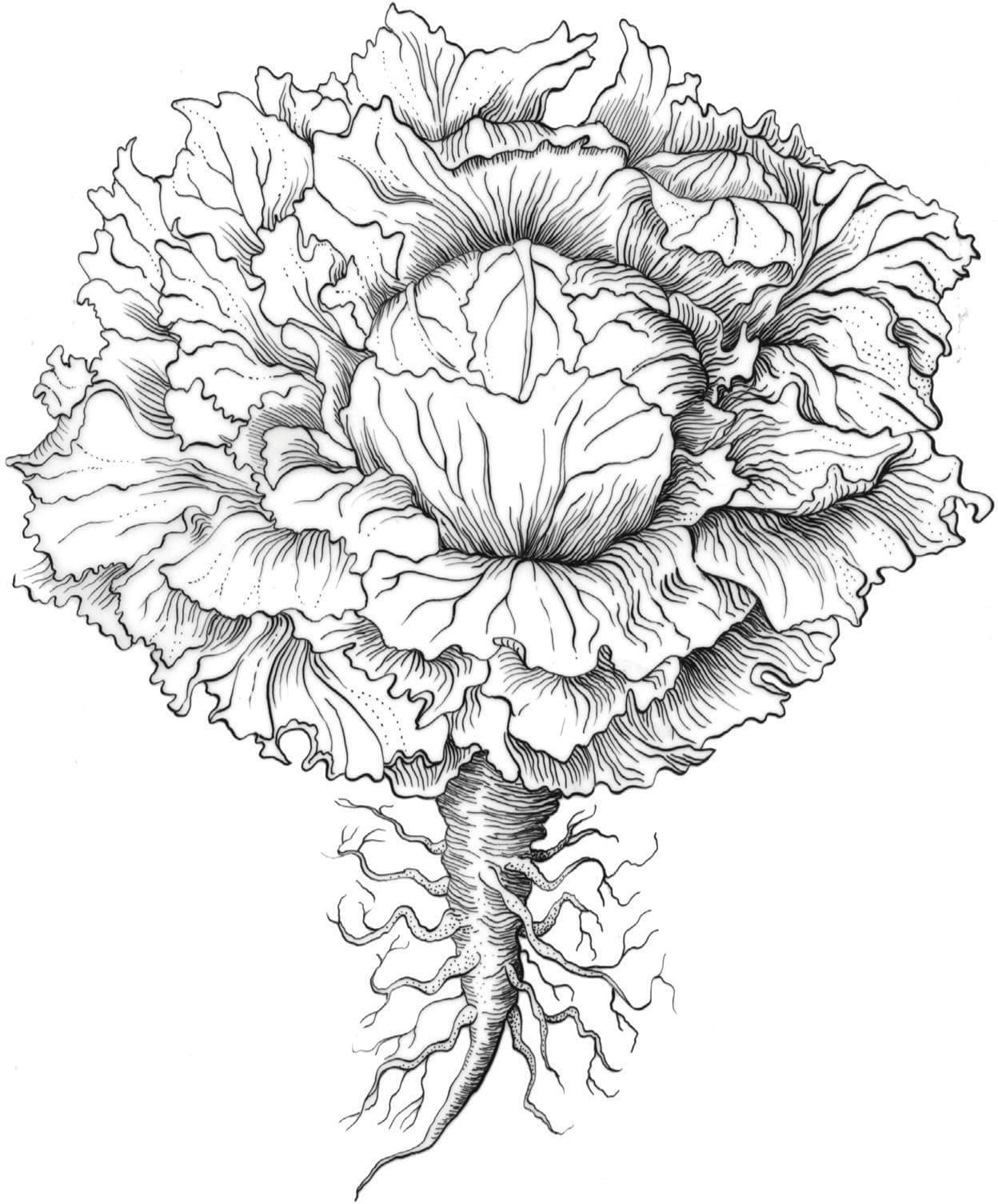
Lettuce, 8" × 10," pen and ink on double-frosted Mylar
This was one of my favorite and most challenging paintings. It was a private commission for a client of a five-foot male turkey in full strut. In researching for this piece, I used everything imaginable. I purchased the tail spread open, two wings, breast feathers, and the feet from an online retailer. I went to a local farm and was able to witness how the bird positions its wings, head, and tail as it walks. The breast feathers I purchased were not loose, but attached as a skin, which allowed me to bend the skin to see how the feathers separate. This helped me illustrate how light creates their iridescent quality. This illustration took me three months to complete, from start to finish.
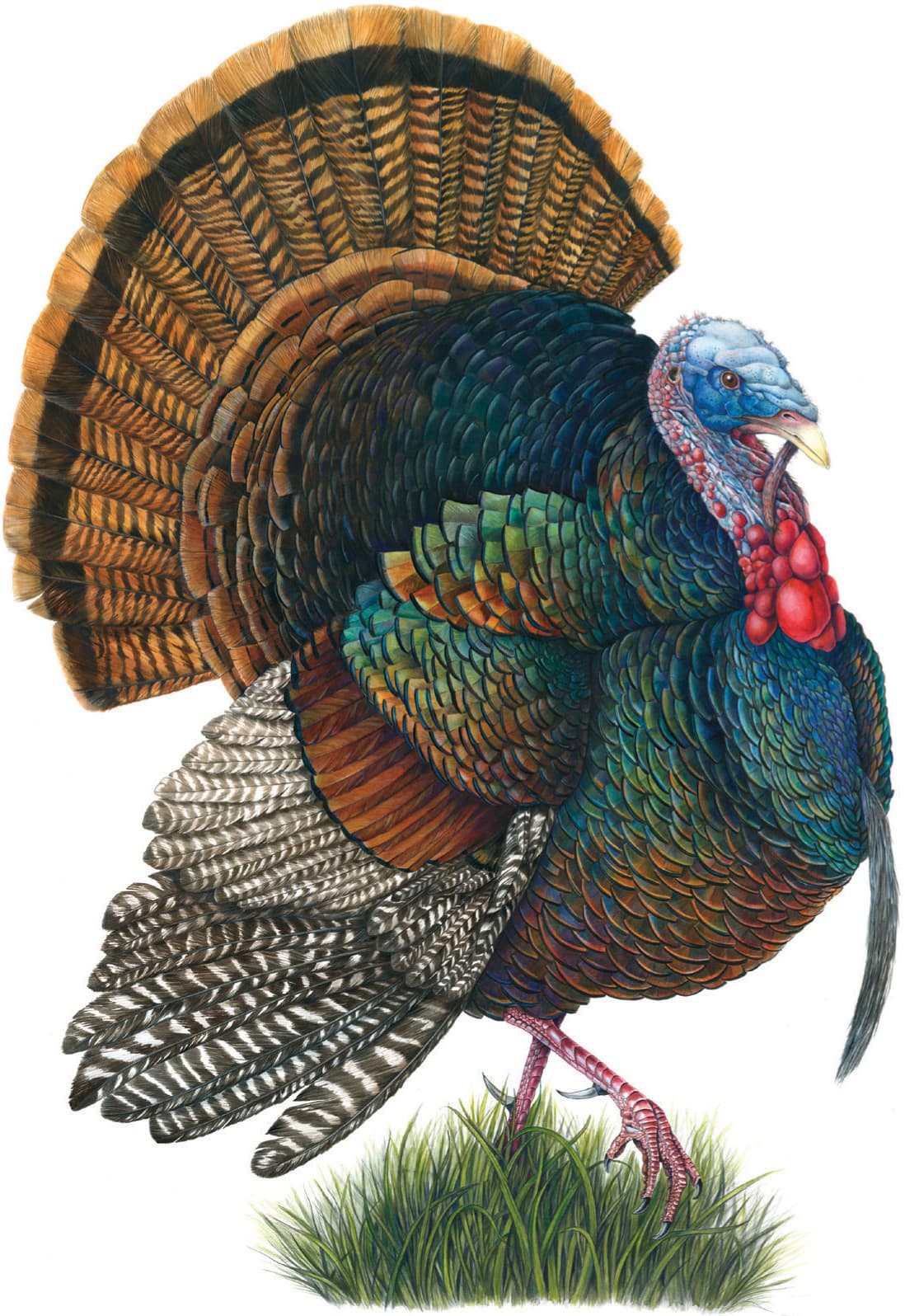
The General, 60" × 40," graphite, watercolor, colored pencil, ink, and gouache on Lana Aquarelle Hot Press 300-lb.
I created this small painting with loose washes of watercolor to block in color to fill all the white space. Then I used colored pencils to refine and add detail. To finish, I used pan pastels to create the background and add to the feathers to bring it all together. The key to working in mixed media is to have a cohesive, allover finished painting. If I had only used pastels on the background, for instance, and not on the feathers, the finished painting would look disjointed.
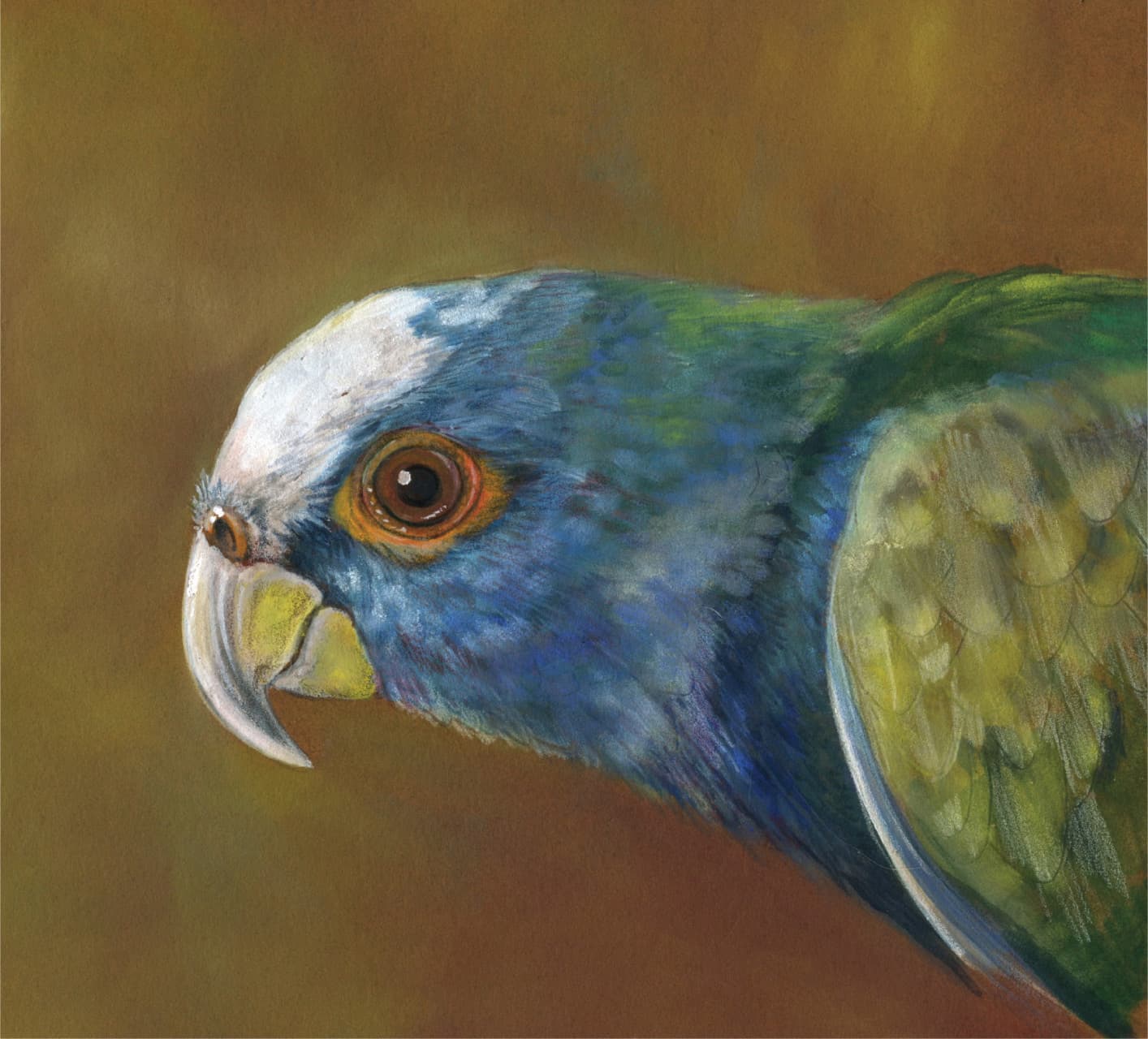
White-crowned Pionus, 10" × 8," watercolor, colored pencil, and pan pastel on Fabriano Artistico Hot Press 300-lb.
